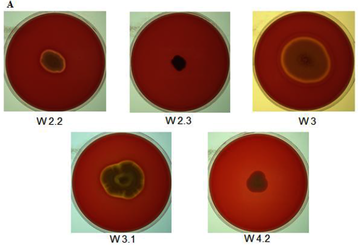Chien-Yi Chang et al.
“Unusual Long-Chain N-Acyl Homoserine Lactone Production by and Presence of Quorum Quenching Activity in Bacterial Isolates from Diseased Tilapia Fish”
In 2009, a bacterial epidemic killed approximately 50% of the Malaysian stock of tilapia, a globally important aquaculture fish. Kok Gan Chan at the University of Malaya, Malaysia, and Chong-Lek Koh at Nanyang
Technological University, Singapore, are developing a novel way to reduce the virulence of future outbreaks that could curb the need for treatment with antibiotics.
Many bacterial virulence factors, such as proteins that digest host protein or blood, are controlled by a process called quorum sensing (QS). Individual bacterial cells secrete QS molecules, and when the molecules reach a threshold level that indicates sufficient bacterial population density, the bacteria produce virulence factors. By identifying ways to degrade QS molecules — called quorum quenching — molecular biologists may be able to decrease the virulence of bacterial epidemics. If successful, it could reduce the risk of the emergence of multi-drug-resistant bacteria.
Chan, Koh, and colleagues identified several unique QS molecules produced by Serratia sp. andPseudomonas sp. of bacteria isolated from a tilapia that died in the 2009 epidemic. From the diseased tilapia, the researchers also identified a bacterial strain that produces quorum-quenching molecules, which could be used as a biocontrol agent against common bacterial pathogens.








